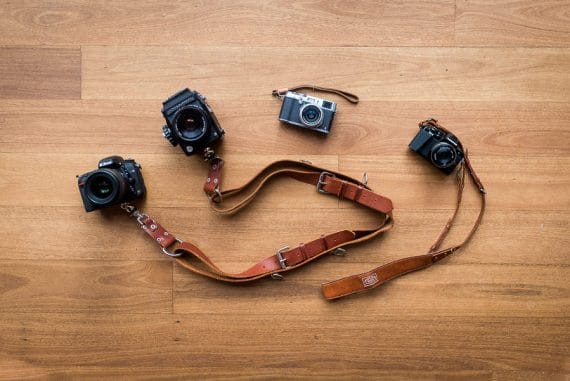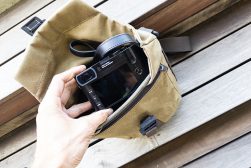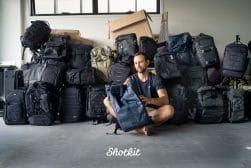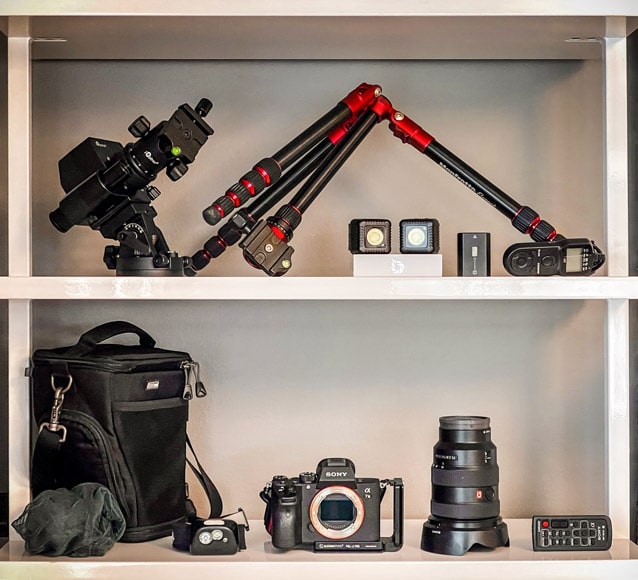
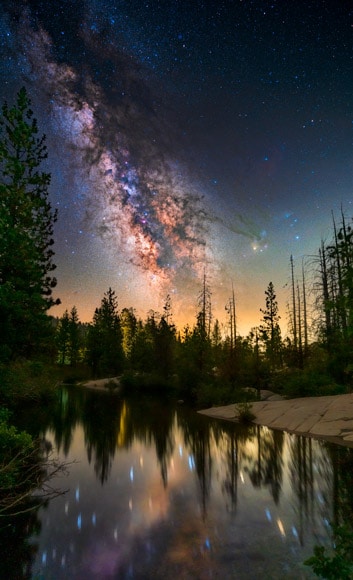
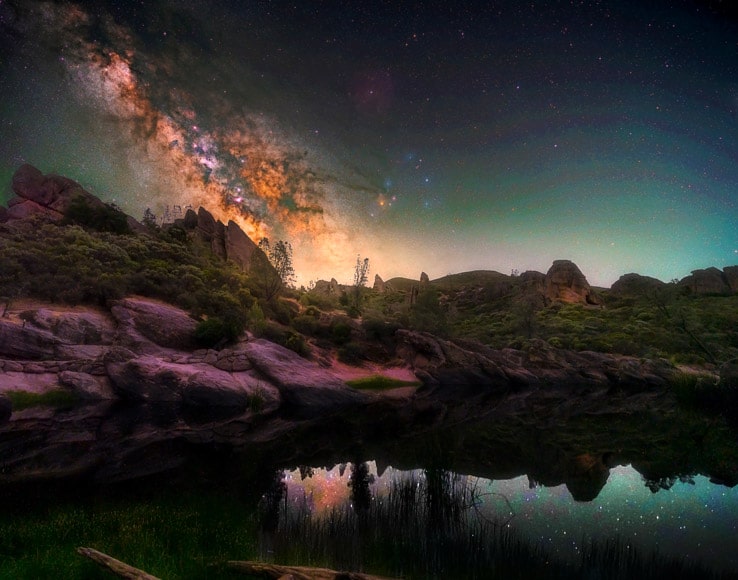
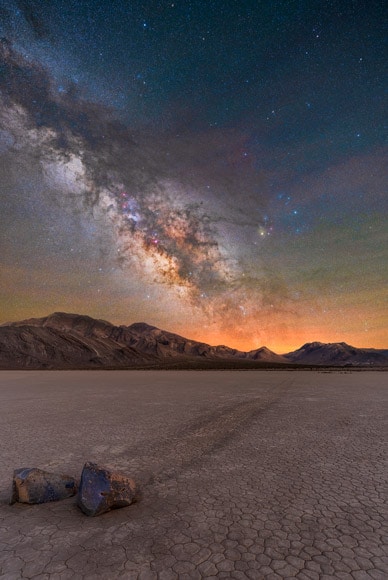
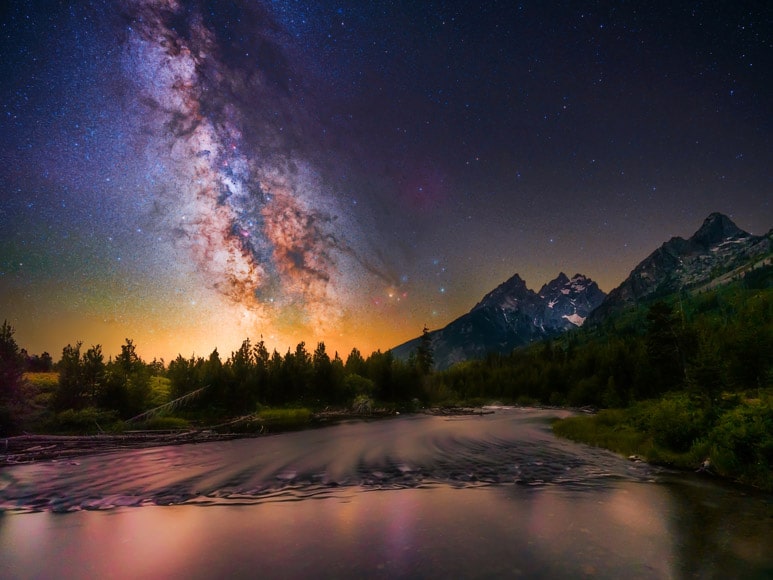
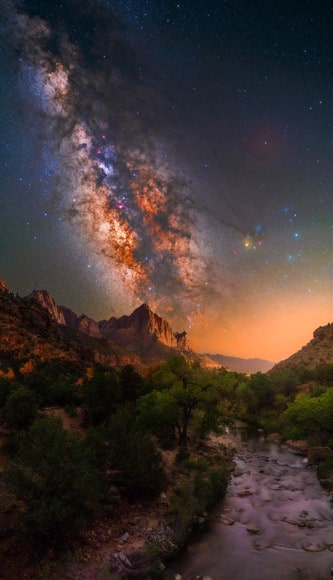
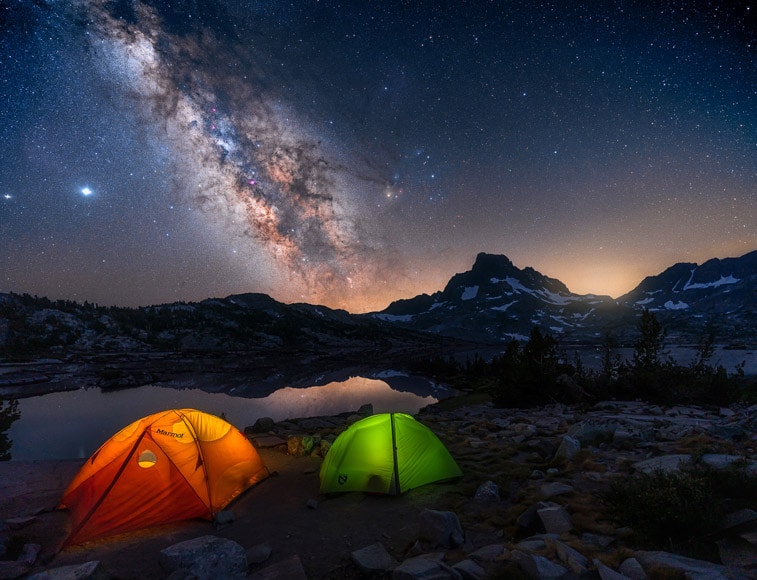

Kelly Teich
Landscape | Last Updated: November 21, 2021
My name is Kelly Teich, and I’m an Architect based in Santa Barbara, California. My passion for photography developed as I began combining my creative outlet for design with my desires of backpacking, scuba diving, and architecture.
Several years ago, I captured my first Milky Way photo while backpacking on the John Muir Trail. The photo was not great, but I was impressed with the capabilities of my cheap cropped sensor camera at the time to even be able to capture the details of the Milky Way.
So began my pursuit to upgrade my equipment and chase the Milky Way during the summer months at some of the most iconic locations in California and the western United States. However, being a backpacker, I needed a lightweight, minimalist setup that would not compromise on quality.
Therefore, all my astrophotography is captured using a single camera / single lens arrangement.
Camera – Sony α7 III
As wide-angle astrophotography is my main focus, this full-frame, mirrorless camera body is the perfect fit. It has amazing performance in low light conditions, even at low ISO settings. Moreover, this camera also produces remarkably clean images at high ISO settings.
I never find myself working too hard in post-processing to bring out the details captured by its 24MP sensor. I also appreciate the smaller file size of the 24MP images, which allows me to store more photos and speed up the post-processing time over the higher resolution sensors that the other alpha models provide.
The dimensions of the camera body are another factor for me. It’s much more compact than a full-frame DSLR body, but not so small where it’s uncomfortable to operate.
Lens – Sony FE 16-35mm f/2.8 G Master
This lens is fantastic! Being my only lens for backpacking, the zoom range from ultra-wide to semi-wide is a must. Furthermore, the f/2.8 aperture across the entire zoom range gives me the flexibility to shoot the Milky Way at 35mm for more detail in the image.
The lens’s performance is ideal for wide-angle astrophotography and is also excellent for landscape and architectural photography. The quality and durability of this lens has held up through sub-freezing temperatures, wind-blown sand, and rain.
If you are only going to hike/travel with only one lens, this is the one!
Camera Mount – iOptron StarTracker Pro
For astrophotography, a star tracker is a game-changer. It allows for long exposures at a lower ISO without star trails. The amount of detail using a star tracker with the Sony α7 III is incredible. This particular tracker is fairly easy to set up and is one of the more compact trackers for stowing away in a backpack.
Additional Accessories
Think Tank Digital Holster 20 camera case – this camera holster has storage compartments and an expandable bottom extension that fits most of my gear, with the exception of my tripod and star tracker.
I usually wear it using the shoulder strap, with my backpack over the top of the shoulder strap, and the backpack hip belt under the holster. This case has a built-in rain cover to keep everything dry in the event that I encounter some weather on the trail.
Manfrotto Element Aluminum Tripod – perfect for backpacking, this tripod is ultra-compact and weighs only 2.5 lbs with a maximum payload of 9 lbs. So to hold my complete astro setup (camera/lens/star tracker) of 6.5 lbs it works really well.
It’s not the most stable tripod in windy conditions, but it does have the ability to hang some weight from its base to improve the stabilisation.
Sunwayfoto L-Bracket – this bracket when attached to the bottom of the camera body allows easier use of a ball head in portrait orientation, especially with a star tracker.
Remote & Intervalometer – for long, multiple-night shots, the intervalometer lets me set it and forget.
Breakthrough Photography 10 stop ND Filter – an excellent filter for long daytime exposures.
Peak Design camera strap – this camera strap is easy to remove and reattach so it’s not in the way when using the tripod.
Lumecubes – occasionally low-level lighting is needed to illuminate the foreground, and these Bluetooth LED lights allow perfect control of light output using a phone app.
Camera battery – an extra authentic Sony just in case.
Headlamp
Mosquito head net – this can be a lifesaver when shooting at blue hour near a creek or a lake.
I use Adobe Photoshop CC on an Apple MacBook Pro for my post-processing, with the majority of the processing being done in Photoshop’s camera raw editor. If you have any questions regarding astrophotography, my gear, or my processing workflow, feel free to reach out!
www.kellyteich.com | @kelly.teich

Check out these 8 essential tools to help you succeed as a professional photographer.
Includes limited-time discounts.





